Grow lights, especially LED grow lights, are becoming increasingly necessary and popular among growers. In 2025, almost half of the plant growers are utilizing LED grow lights throughout the full stages of plant growth.
What about the rest half? Well, they prefer to use normal lights. This is because they believe that grow lights and regular lights are the same thing. Is this true? When it comes to grow light vs regular light, what are the differences between grow light and normal light?
In the following content, we’ll compare grow lights and regular lights, exploring their similarities and what sets them apart in indoor gardening.
Table of Contents
What Makes a Grow Light a Grow Light?
Grow lights are different from regular lights. Grow light is designed to stimulate plant growth by emitting a light spectrum suitable for photosynthesis. These lights are always applicable where there is either no natural light or supplemental lighting.
In a nutshell, you cannot use any light as a grow light. Here, we'll further explain what makes a grow light a grow light and highlight 5 aspects that grow lights, mainly LED grow lights, differ from regular lights:
- Light spectrum
- Light intensity
- Heat emission
- Power consumption
- Energy efficiency
- Lifespan
Light Spectrum
LED grow lights and standard LED lights both produce light, but they differ in the breadth and intensity of the spectrum they emit. LED grow lights generate a broader spectrum, usually within the 400-700nm range, encompassing blue (400-500 nm), green (500-600 nm), and red (600-700 nm) light. Each growth light spectrum positively influences plants:
- Blue light: Enhances foliage thickness and plant compactness.
- Green light: Aids in effective light absorption for lower-placed leaves.
- Red light: Influences plants to grow longer and narrower.

In contrast, regular LEDs predominantly produce white and yellow light. Though they benefit plants to some extent, they aren't as efficient as grow lights which are crafted explicitly for plant growth.
Light Intensity
The strength of light emitted is a vital differentiation. Measured in PPFD (Photosynthetic Photon Flux Density), it quantifies the photosynthetic light that plants receive. While regular LED bulbs might seem bright, their PPFD is often lower than grow lights. For example, LEDTonic's tests showed that standard LEDs ranged from 25 to 600 µMol/m^2/S based on distance, while grow lights could reach up to 1400 µMol/m^2/S. Hence, for indoor plant cultivation, grow lights are superior due to their adjustable light intensity.
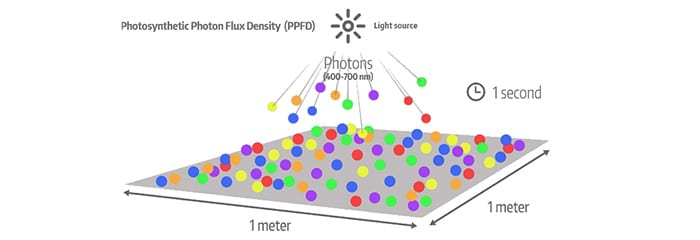
Tips: Don't know the PPFD of your light? Spider Farmer GGS Sensor Pro Kit offers a PPFD sensor to help you out!
Heat Emission
LED grow lights, despite their powerful output, are notably efficient in their heat emission. They are designed to produce the necessary light spectrum for plants with minimal heat waste. This is in stark contrast to older types of grow lights, such as HPS grow lights, which can generate substantial heat.
Regular LED lights for household use also emit minimal heat, but they are not designed to be on for extended periods, unlike the grow lights. Extended use of regular LEDs in a confined space could lead to heat buildup. On the other hand, many LED grow lights come equipped with integrated cooling systems to ensure the heat emission is not only safer for the plants but also for the indoor grower.
Read Also: Can LED Lights Catch on Fire
Power Consumption
While light intensity can be gauged by wattage, grow lights, due to their broader spectrum, tend to have a higher wattage than regular bulbs. Despite this, they're designed for efficiency, consuming up to 50% less energy than regular bulbs, running cooler, and providing a more effective light spectrum. For those concerned about the cost implications, numerous resources delve into the expenses tied to running LED grow lights.
For a detailed cost, check this post: How Much Do LED Lights Cost
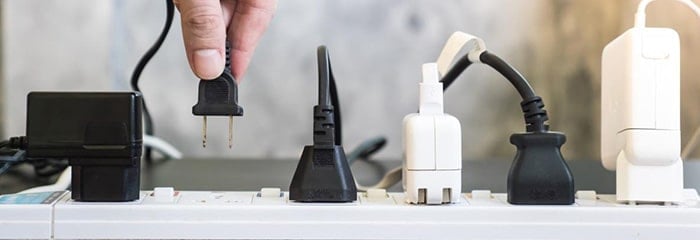
Energy Efficiency
Regular LED lights are designed primarily for illumination, with energy efficiency in mind. However, LED grow lights, while also being energy-efficient, are optimized for both power consumption and the specific light spectrum needs of plants. This means that while a grow light might consume more power at peak performance than a regular LED bulb, it delivers more value in terms of plant growth per watt consumed.
Furthermore, many modern grow lights come equipped with smart features that adjust light intensity based on the time of day or the growth stage of the plants, further optimizing power usage. When assessing the overall energy costs, while LED grow lights might have higher upfront power consumption, their specialized design and efficiency can lead to more sustainable long-term energy expenditure.
Lifespan
When considering the longevity of lighting solutions, LED grow lights often have an edge over regular LED lights. Designed explicitly for prolonged daily usage in agricultural settings, LED grow lights are built to endure. Many high-quality LED grow lights have a lifespan ranging from 50,000 to 100,000 hours, such as Spider Farmer LED grow lights, ensuring several years of consistent performance.
On the other hand, regular LED bulbs, meant for household use, usually have a lifespan of about 25,000 to 50,000 hours. Although these numbers seem impressive, the frequent on-and-off cycles typical in household settings can reduce the effective lifespan of these bulbs.
Can You Use LED Lights to Grow Plants?
Yes, you can use LED lights to grow plants, but not all LED lights are suitable for this purpose.
After all we talked about above, you need a full-spectrum LED light that closely mimics natural sunlight. Why? Plants rely on a wide range of light wavelengths, each of which plays a role in different aspects of their growth. Say, that blue light encourages compact growth, red light stimulates flowering, and green light is crucial for photosynthesis.
Regular LED lights, however, typically emit a limited spectrum and are focused on brightness (lumens), which is not what plants require. Plants use light energy in the form of Photosynthetically Active Radiation (PAR), not lumens. Regular LEDs have very low PAR output, which means they are only suitable for plants with very low light needs, such as those grown with natural sunlight coming through a window.
For a successful indoor garden, especially if growing a variety of plants beyond small herbs, you would need an LED light specifically designed for plant growth, which provides a higher light output and full spectrum.
Can I Use a Normal Light as a Grow Light?
Not really. While normal lights can provide some illumination for plants, they lack the specific spectrum and intensity plants need for optimal growth. These lights primarily focus on providing visible light to the human eye, typically measured in lumens, rather than the specific wavelengths of light (PAR) that plants need for photosynthesis and healthy growth. It's possible to use them for short-term or minimal needs, but for healthy growth, especially in plants requiring significant light, LED grow lights are recommended.
FAQs about Grow Light vs Regular Light
By the end of the post, we'll further explore the frequently asked questions about grow lights and regular lights.
- Are grow lights better than normal lights?
Yes, grow lights are specifically designed to cater to the light spectrum needs of plants. They provide the right color temperatures and intensities to promote various growth stages in plants, from seedlings to flowering. In comparison, normal lights are designed mainly for human visibility and may not offer the best conditions for plant growth.
- Are grow lights better than normal lights?
- Can plants photosynthesize with normal light bulbs?
Plants can photosynthesize with normal light bulbs to some extent. However, regular bulbs often lack the full spectrum of light that plants require for optimal photosynthesis. Therefore, while plants might survive under regular light bulbs, they may not thrive as they would under grow lights.
Final Words
Grow lights and ordinary LED bulbs serve distinct purposes. While typical LEDs are for general illumination, LED grow lights are tailored for plant growth, replicating sunlight for indoor plants. They offer a richer light spectrum, emphasizing red, blue, and green, ensuring optimal plant growth. Moreover, grow lights are more energy-efficient than regular LEDs, making them a cost-effective choice. Overall, for indoor plant enthusiasts, grow lights stand out as the more effective, efficient, and increasingly popular choice.

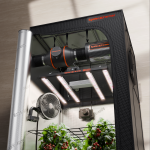
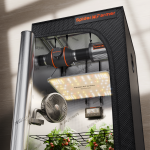
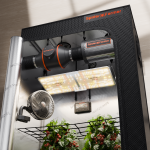
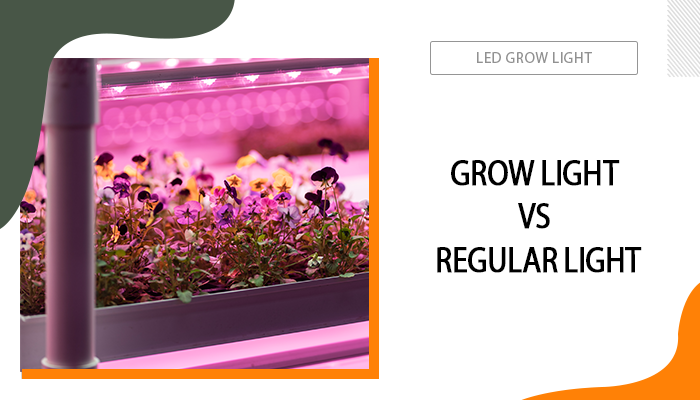


I grow tomatoes and lettuce in two rows that are 2.5 X 12’, what lights could I use for that footprint and will your led’s push the the tomatoes through flowering and fruiting?
Thanks
Dave
Hi Dave, we recommend 6 units SF600 for you. It can push tomatoes through flowering and fruiting.
10ft x 5ft max 5 plant what would I need in led grow light ?
Hi, we recommend 2x SE7000 LED Grow Light